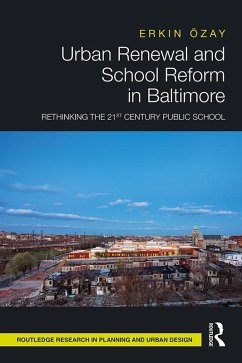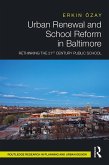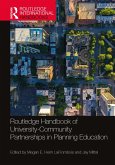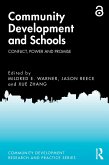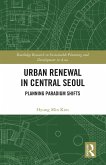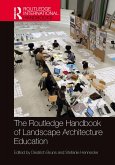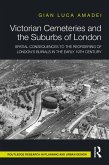Dieser Download kann aus rechtlichen Gründen nur mit Rechnungsadresse in A, B, BG, CY, CZ, D, DK, EW, E, FIN, F, GR, HR, H, IRL, I, LT, L, LR, M, NL, PL, P, R, S, SLO, SK ausgeliefert werden.
Anne-Marie Lubenau, FAIA
Director of the Rudy Bruner Award for Urban Excellence at the Bruner Foundation
"Erkin Ozay's account of the Baltimore Schools is truly masterful at many levels: at exposing the importance of past reforms and their cumulative impact on education today, at explicating the complexities, challenges and benefits of the collaborative process in the programming and design of educational facilities, and at conveying to its readers, in a responsibly uplifting way, the crucial role that architecture plays in enlivening education and democracy while it is being enlivened by them."
Hashim Sarkis,
Dean of the School of Architecture and Planning, MIT
"Urban design and urban politics are tightly interwoven, and education often stands at the juncture of the two. Erkin Ozay's Urban Renewal and School Reform in Baltimore is a clear-headed, sensitive, and often poignant recounting of East Baltimore's chequered attempts to leverage community renewal, neighborhood reconstruction, and renewed neighborhood education in the early 2000s. As distressed American cities continue their struggle for more equitable and accessible public education, Ozay's analysis of the Henderson-Hopkins school's challenging birth will be a reassuring tale of institutional partnerships to some, a cautionary tale of state-led gentrification to others. For all readers concerned with the intersectionality of planning, design, politics, and society in American cities, this is essential reading."
Brent D. Ryan,
Associate Professor of Urban Design and Public Policy, MIT
"Urban Renewal and School Reform in Baltimore is a clear and compelling exploration of redevelopment efforts in East Baltimore. Erkin Özay delves into the evolving relationships between public schools and urban neighborhoods, exposing a persistent gap between civic intentions and community outcomes. A must-read for public officials, designers, and anyone committed to equitable community development, this book asks important questions about urban revitalization, displacement, and whether market forces can be leveraged for the benefit of distressed communities."
Terry Schwarz
Director, Kent State University's Cleveland Urban Design Collaborative

